The Camino Primitivo
The Camino Primitivo or “The Original Way” is the very first pilgrimage ever made to Santiago. There are two routes or “ways” that pass through the region of Asturias ,the other route is the Northern Coastal Route.
The Camino Primitivo or “The Original Way” is the very first pilgrimage ever made to Santiago. There are two routes or “ways” that pass through the region of Asturias ,the other route is the Northern Coastal Route.
Der Primitive Weg. Der Jakobsweg ist eines der größten, religiösen, spirituellen und kulturellen Ereignisse der menschlichen Geschichte. Pilgerer aus der ganzen Welt folgen den verschiedenen historisch festgelegten Wegen, bis sie schließlich an der Kathedrale von Santiago ankommen. In Asturien befinden sich zwei dieser Wege, einer der an der Küste entlanggeht und einen weiteren, der durchs Landesinnere verläuft, welcher auch der erste Pilgerweg überhaupt war. Man nennt ihn Camino Primitivo, Der Primitive Weg.
Im 9. Jahrhundert trieb König Alfonso der II. dessen Hof sich in Oviedo befand, die Jakobswanderer an, sich nach ihrer Pilgerreise auch noch die gerade eben entdeckten Gebeine des Apostels Jakob (Santiago) anzusehen. Er ließ eine Basilika bauen zu Ehren seiner Grabstätte. So wurde die Stadt Santiago de Compostela gegründet.
Diese ist die erste historisch festgelegte Route, Der Primitive Weg die in Oviedo anfängt und dann weitergeht über Las Regueras, Grado, Salas, Tineo, Pola de Allande und Grandas de Salime, bis man schließlich in der Provinz Galicien ankommt und dann weiterzieht bis nach Santiago.
Der Anfang dieses Weges befindet sich in Oviedo, welches sich seit dem Mittelalter in ein wichtiges Pilgerzentrum verwandelt hat. Ein Sprichwort sagt: “Wer nach Santiago geht und nicht nach Salvador, besucht den Knecht und nicht den Herrn.” Deshalb haben auch die meisten Routen Wegabzweigungen nach Oviedo, um sich dort die San Salvador Kathedrale anzusehen. Ein weiterer Höhepunkt ist auch der Besuch der “ Heiligen Kammer” , in der verschiedene Reliquien aufbewahrt werden, unter anderem Das “Heilige Schweißtuch”.
Oviedo, außerdem Hauptstadt des Prinzipat Asturiens, besitzt herausragende präromanische, bürgerliche und religiöse Bauwerke, die 1985 und 1988 von der UNESCO zum Weltkulturerbe erklärt wurden.
Abgesehen von seinem kulturellen und religiösen Angebot, ist Oviedo eine wunderschöne, moderne Stadt, mit hervorragenden Hotels und einer renommierten Gastronomie. Sie bietet ein breites Unterhaltungsangebot und Einkaufsmöglichkeiten. Das gastronomische Angebot hat ein sehr hohes Prestige. Besonders bekannt sind die vielen Süßspeisen und vor der Abreise sollte man unbedingt die köstlichen Carbayones probieren.
Dringt man weiter vor auf dem Primitive Weg, kommen wir in das ländlich gelegene “Las Regueras”. Die Pilgerer können dort die präromanische Kirche in San Pedro de Nora besichtigen.
Das nächste Ziel dem Jakobsweg ist Grado, das man über die römische Brücke von Peñaflor betritt. Dort bekommt man noch die Möglichkeit, die ebenfalls römische San Juan Kirche zu besuchen. In Grado treffen verschiedene historische Routen und Wanderwege aufeinander. Diese Kleinstadt ist ein typisches Beispiel für ein städtisches Ambiente in ländlicher Umgebung. In Asturien ist Grado sehr bekannt, vor allem wegen seines Geschäftsverkehrs, der schon im Mittelalter entstand und auch heute noch in seinem Wochenmarkt fortgesetzt wird, der immer mittwochs und sonntags stattfindet.
Weitere Anziehungspunkte von Grado sind außerdem sein historische Altstadt, die indianische Architektur und die lokale Gastronomie, die viel gerühmt und ein hohes Ansehens genießt. Zum Beispiel wegen seines handgemachten Käse ”Afuega ´lpitu oder seiner deliziösen Süßspeise “Tocinillo de Cielo”.
Man verlässt Grado über El Fresno, wo man dessen Kirche bewundern und einen eindrucksvollen und wunderschönen Ausblick über Berge und Täler genießen kann.
Zieht man weiter in Richtung Salas, sollte man seinen Weg in der Ortschaft Cornellana kurz unterbrechen, um dort das Kloster San Salvador aus dem 11. Jahrhundert zu besichtigen, dessen Turm und Tor de las Osa im barocken Stil gebaut wurden. Dann geht es weiter zur mittelalterlichen Kleinstadt Salas, um dort seine historische Altstadt, sowie die Stiftskirche Santa Maria la Mayor, die Burg Valdes oder den mittelalterlichen Turm zu besuchen.
Die Täler und die Berge, die von mittlerer Höhe sind, sind ideal für den Angel und Wandersport. Vor allem der Fluss Narcea ist einer der berühmtesten Flüsse Südeuropas für den Lachsfang. Deshalb ist der Angelsport auch die beste Werbung für diese Gegend. Man sollte Salas auf keinen Fall den Rücken kehren, ohne sein himmlisches Gebäck, die “Carajitos del Profesor” zu probieren.
Von dort aus geht es weiter Richtung Tineo, eine historische Kleinstadt inmitten üppiger Natur. Dieses war, während des römischen Imperiums, eine sehr einflussreiche. Gegend, was wohl auf das große Goldvorkommen zurückzuführen ist.
Die Pilgerer dem Primitive Weg gehen dann am Campo de San Roque abwärts in die Stadt, vorbei an der Herberge und am Pilgerkrankenhaus, außerdem am Museum für sakrale Kunst, an der San Pedro Kirche und an Cruceiro. Tineo ist bekannt für seine köstliche Gastronomie, besonders beliebt sind Suppen und Eintöpfe, außerdem Wurstwaren, der bekannteste ist der “Chosco”.
Auf dem Primitive Weg nach Pola de Allande trifft man auf das Kloster Santa Maria la Real de Obona. In dem Dorf selbst kann man dem Cienfuegos Palast und den Kirchen San Andres, Avellano und Celon, sowie dem Castro San Chuis einen Besuch abstatten.
Dieser Teil des Weges findet in mitten in der Natur statt und bietet einige einzigartige Aussichten und Perspektiven der Wanderung an. Zum Beispiel den Palo Pass und den Montefurado Pass. Hier befindet sich auch die Höhle Xuan Rata y Fana de la Freita, eine alte Goldmine, die ein Beweis von der architektonischen Baukunst der Römer in dieser Zeit darstellt.
Diese Gegend ist besonders für seine Bergküche bekannt, in der hauptsächliches rotes Fleisch verarbeitet wird außerdem Eintöpfe und auch Wurstwaren vom Schwein. Selbstverständlich sollte man unbedingt den herrlichen hausgemachten Honig probieren.
Pilgert man weiter trifft man auf das malerische Dorf San Emilio und man hat die letzte Etappe des Jakobsweges erreicht, Grandas de Salime. Mitten in dieser ländlichen Gegend erwartet uns der Grandas Stausee, ein wunderbares und spektakuläres architektonisches Baukunstwerk. In der Kleinstadt haben wir die Möglichkeit das Heimatmuseum zu besichtigen, wohl das kompletteste in Asturien und weiterhin auch das San Salvador Kloster, die Pilgerherberge und den sehr gut erhaltenen Castro Chao San Martin.
Zum Mittagessen bietet Grandas verschiedene Spezialitäten an, wie etwa seine typische Bergküche. In manchen Gerichten spürt man aber schon den Einfluss der galizischen Küche und kann zum Beispiel auch einen köstlichen Oktupus genießen.
Von dort aus wandert man weiter zum Acebo Pass und betritt schon die Provinz Lugo, wo noch die galizischen Etappen des Jakobswegs zu absolvieren sind. Noch drei weitere, um dann endlich in Santiago anzukommen.
Thank you to Susanne Plucker for the locution of this video.
Music by the Asturian Folk Group Corquieu. Album Suaña (Winners of the Best Folk Album and Folk Song in 2010). If you want to buy the CD you just have to send an e-mail to corquieu@gmail.com or contautu@corquieu.com
If you want more information contact Where is Asturias at info@whereisasturias.com





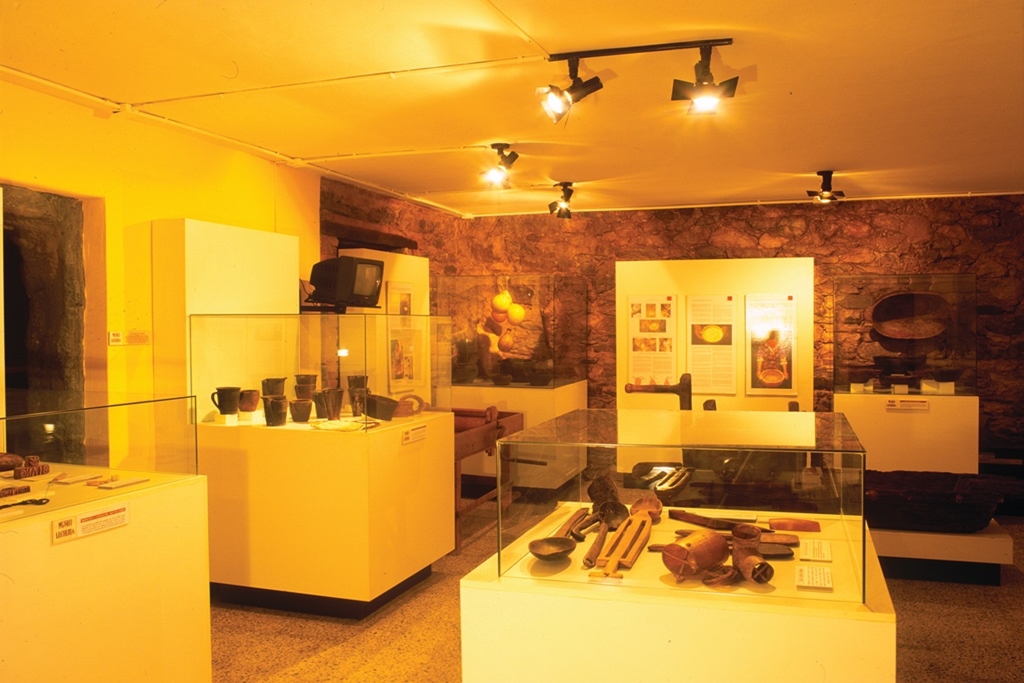


The council of Morcin is part of the Central Mountains of Asturias. In this area you have two types of landscapes, one of impressive natural beauty and the other more industrial in its makeup reminding you of its mining heritage and long industrial history.
The location offers a wealth of Natural and Protected Spaces, leafy Beech and Oak forests, green mountain pastures, narrow valleys and large meandering rivers.This natural beauty is juxtaposed with examples of past and present mining activites and Slack-heaps, mine entrances, Headframes, worker’s housing, etc dot the landscape. This is a real cornucopia for those who have an interest in Industrial architecture and landscapes. Mining has moulded Asturias and plays a significant part in her story so it is worth while learning about this history as it will help to understand the local community a bit more.
Morcin is home to a wealth of stone monuments, megalithic structures, necropolis and old settlements. The Route of the Silver cross the territory of Morcin. .
The Route of the Silver is Roman of origin and crosses the peninsula from north to south starting in Gijon, Asturias, and finishing in Seville, Andalucía. This was built to facilitate commerce and legion movement. After that, the route was mainly used by shepherds who took their livestock to the greener pastures of Asturias during the summer
The Council of Morcin is located in the protected area of the Mountain Rage of Aramo and is a perfect union between the history and nature of Mount Monsacro and the rivers of Morcin and Barrea. One of the principal attractions for tourists is the Mostayal Peak and its ascent through Peñerudes.
The main town in Morcin is called La Foz and has been awarded with “Exemplary Town of Asturias Award”. This is an award given by the “Princess of Asturias Foundation” and delivered in person by the King and Queen of Spain. The award shall be conferred upon a town, village, population centre, scenic area or group of people in the Principality of Asturias that have stood out in a notable way in “defending and conserving its natural or environmental setting, its historical, cultural or artistic heritage, or in the carrying out of outstanding communal works or other such displays of solidarity”.
Also in Morcin you can find more examples of cultural interest like The Chapels of Monsacro, the Medieval Tower of Peñerudes and the parish church of Santa Eulalia.
Morcin offfers many Walking Routes throughout protected landscapes such as The Sierra Aramo Route, The Route to the view point of Pando and Pico Llosoriu, the Route to the Chapels of Monsacro and the Mining Route of La Esperanza.
The other main attraction in Morcin is the local gastronomy offering an Asturian traditional fare or Stews, Asturian reared beef, fish from the rivers, cheeses and Asturian desserts.
One very popular dish is the turnip stew, the Afuega el Pitu cheese and the classical Asturian almond pastries. There is also the Museum of Cheeses of Asturias.
More info: Morcin Tourist Office
If you want more information contact Where is Asturias at info@whereisasturias.com
Images supplied by Consorcio Montana Central and Turismo Asturias: Marcelo Suárez, Ana Muller, Armando Montes, José Suárez and Arnaud Spani.












The council and surrounds of Navia belong to an area called “The Historical Park of the Navia River”. This refers to an area of different councils with a common historical past stemming from the ancient inhabitants of Asturias. The west of Asturias is full of legends, mystery, magic and myth. This is largely because their location between the sea and the mountains of Galicia and Leon and their welcoming character as a land of travellers, farmers, fisherman, shepherds, sailors and craftsmen.
The whole area is like a living museum with exhibits of mountains, beaches, valleys, rivers, towns and forests where you can find history in every step through the remnants of the Celtic, Roman and Christian cultures.
If we had to define this area in few words then it would be inspirational, relaxing, spiritual and mystical.
Other common denominators to all these areas are the mix of Galician and Asturias architecture, with stone structures and slate roofs. The traditional Asturian stores called “horreos” or “paneras” live side by side with Galician Style Barns. You will find these constructions right next to the houses and were designed protect cured meats and the vegetables from animals and insects.
During the middle Ages the nobility and clergy governed the land and left testimonies of their wealth in the form of Palaces, Large Stately Houses, chapels and sanctuaries. You will find a lot of examples of this throughout the enchanting small coastal and inland country villages.
The town of Navia is situated at the Navia estuary. It is a busy and lively service town with a nice port that offers a resting point for the «Route of Santiago» Pilgrims. The town has some excellent examples of medieval architecture such as the old town wall and an old medieval path which can still be seen. Look out for the large 17th century Estates like the “Coaña” and the “Marquees of Santa Cruz” and slightly more modern “Indiano” colonial architecture such as The Casino and the Arias Palace. Some of the best examples of Palaces in the area are Lienes in Armental, Anleo or Camposorio.
Close by to Navia you will find the enchanting fishing village of Puerto de Vega which operated as a whaling town. It is a very easy going town with good restaurants and a nice port. Some of the more culturally interesting buildings to be found there are the Church of Santa Marina, the Chapel of Atalaya and some good examples of Large Houses and Colonial Indiano architecture. Puerto de Vega is considered one of the starting points the Historical Park of the River Navia, through a museum called “Histories of the Sea” which is dedicated to the Life at the Sea.
In this area you will enjoy amazing long beaches surrounded by mountains, stunning landscapes and coastal Routes such as The Beach of Navia, The Beach of Frexulfe or the amazing Barayo Beach, a natural paradise beside a river and forest which was declared Partial Natural Biosphere Reserve.
You have also very nice walking routes to do like “The Coastal Route from Barayo to Navia” or a part of “The Route of Santiago” through the «Northern Route«.
The Gastronomy in Navia is mainly traditional Asturias cuisine with some Galician influences. Casseroles dominate the menu along with Asturian reared beef, fresh fish from the rivers and sea and cheeses and desserts from the area.
In August they celebrate the “Swimming Descent of the River Navia”, an impressive swimming competition and festival considered to be of National Interest.
More info: Navia Tourist Office
If you want more information contact Where is Asturias at info@whereisasturias.com
Images supplied by Tomás Fano, Ayto de Navia, Parque Historico del Navia, and Turismo Asturias: Camilo Alonso.


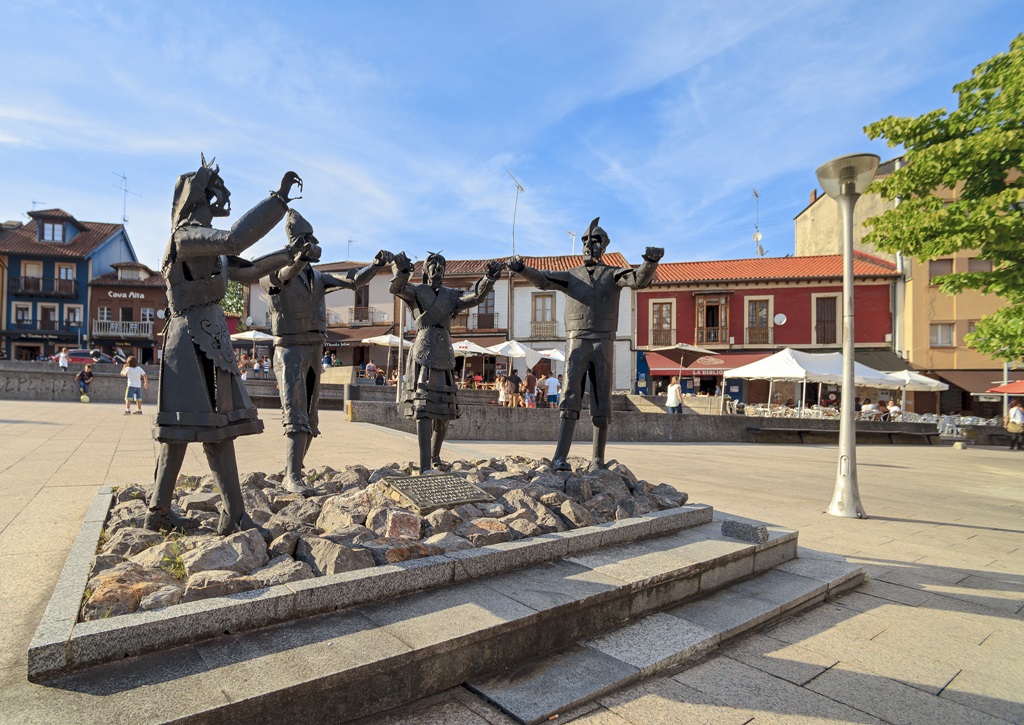
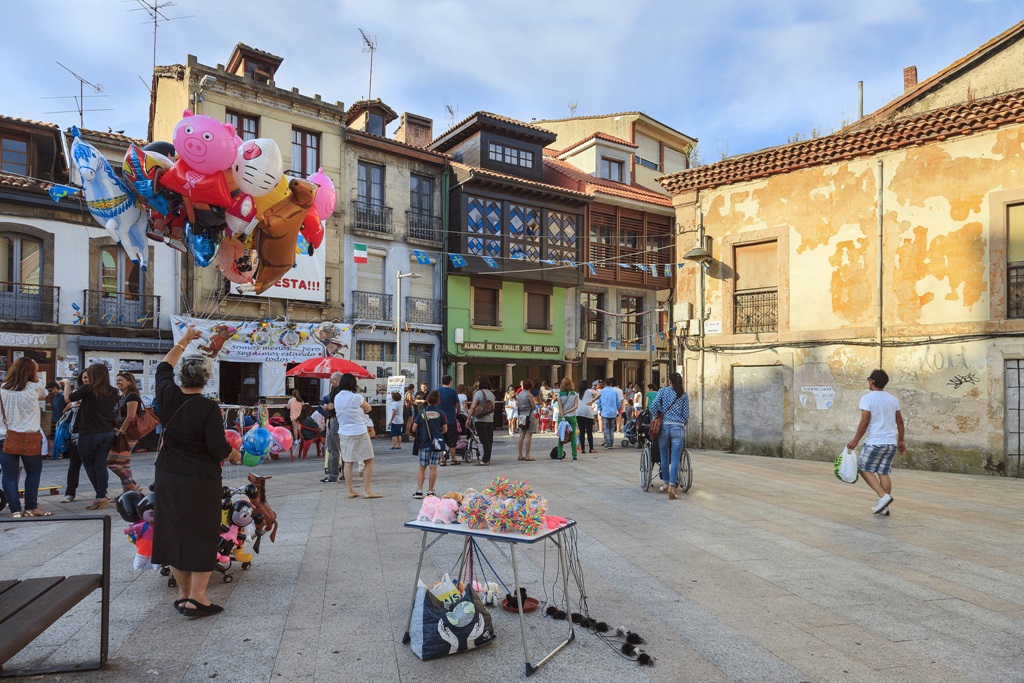

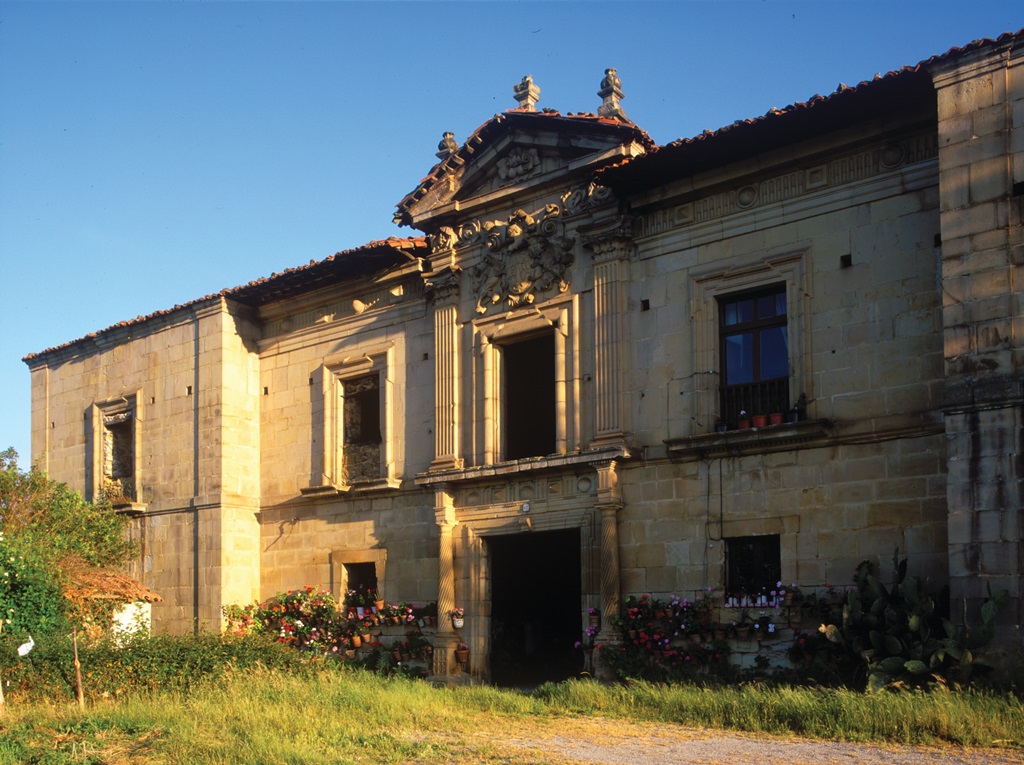



The council and area of Siero is a part of the Nora Region which is made up by the towns of Posada de Llanera, Noreña and Siero and is situated on the banks of the River Nora.
Siero is very important for business due to it strategic location between the three main cities in Asturias, Oviedo, Gijon and Aviles and less than 45 minutes from the airport. It is one of the most important manufacturing, storage and distribution areas for the Principado de Asturias hence the high concentration of large industry in the area.
It is a busy and lively area full of services companies and businesses but is also full of monuments, open spaces, good food and parties.
The council of Siero has a very long and rich history going back to the prehistoric ages and has been well populated since the Iron Age right up to the day.
Siero still preserves some prehistoric sites and burial mounds like the Alto de la Maya (Espinera) or “Cantu Negro” (Bobes). Also, you can find forts in different parishes like Tiñana, Lugones, Marcenado or La Collada.
The Roman colonization can be still seen by way of old roads and Bridges in the villages of Colloto, Bergueres, Lugones and Pola de Siero. You can also find other fine examples of cultural interest such the area of Aramil with a rural Palace and the Romanic Church of San Esteban de los Caballeros. It is also worth visiting the medieval church of San Martin de Arguelles, Santa María in Tiñana, San Felix in Hevia, the Renaissance Palace of Celles, the Palace of Vigil and the Arguelles Estate among others.
The town of Pola de Siero, also known as “La Pola” is quite a bustling place with a vibrant market that takes place every Tuesday. It has also the biggest Cattle Market in Asturias with capacity for up to 4,500 calves and 1,200 cattle.
Siero is a section of the Route of Santiago arriving from the «Northern Route« towards Oviedo where the «Primitive Route« starts. This section tends to be a much appreciated rest bite for pilgrims after battling the elements through the hard and rigorous mountains of Asturias. The section of la Pola is easier going terrain.
Pola de Siero offers many other walking routes such as The Route of Rural Palaces, the Toceo Trail, The Valdesoto trail (east and west stretch), The Camin of Careses, Les Casuques and Vega de Poja.
The local food of this area is a traditional Asturian fare, with stews, Asturian reared beef, chicken dishes, and fresh fish from the sea and rivers. The true gastronomic toast of the area is their pork production and especially the rearing of the local breed called “Gochu celta” or Celtic Pig. The meat of this pig produces excellent organic cured meats, fresh meat and offal.
The area offers plenty of very good restaurants because of the proximity to the highly populated business and industrial areas.
In the town of Pola de Siero celebrates the very popular party of the Painted Eggs over Easter which is considered to be of Interest for national and international tourists.
More info: Siero Tourist Office
If you want more information contact Where is Asturias at info@whereisasturias.com
Images supplied by Tomás Fano, Ayto de Pola de Siero, Comarca del Nora and Turismo Asturias: Marcelo Suárez, Arnaud Spani.
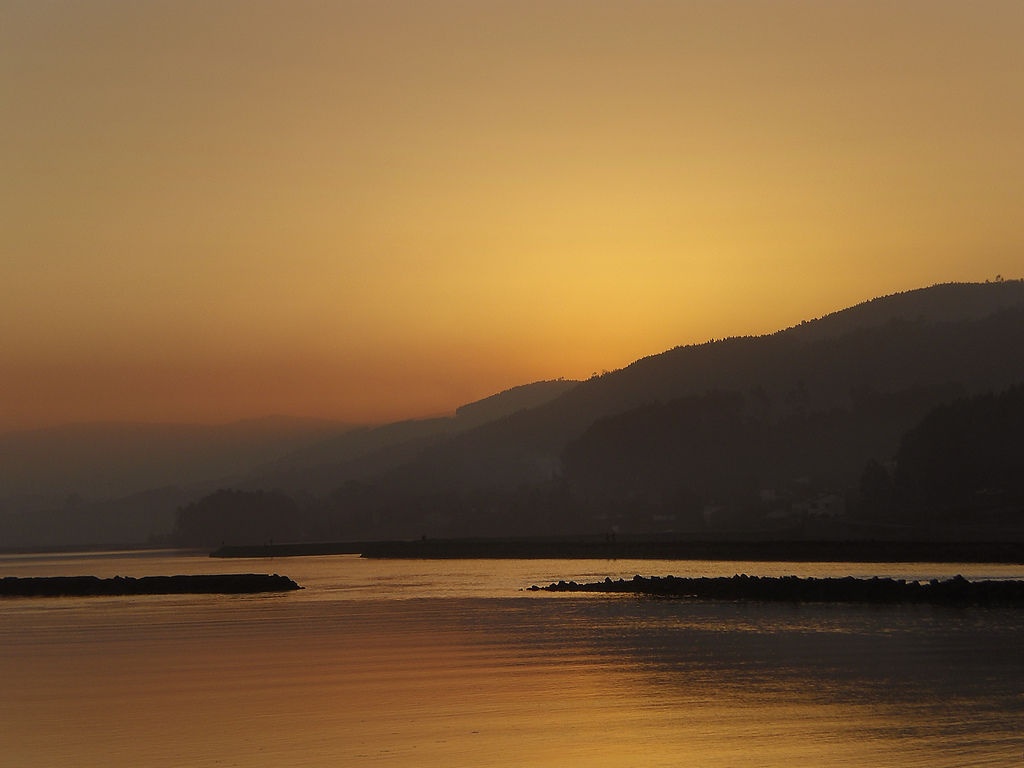












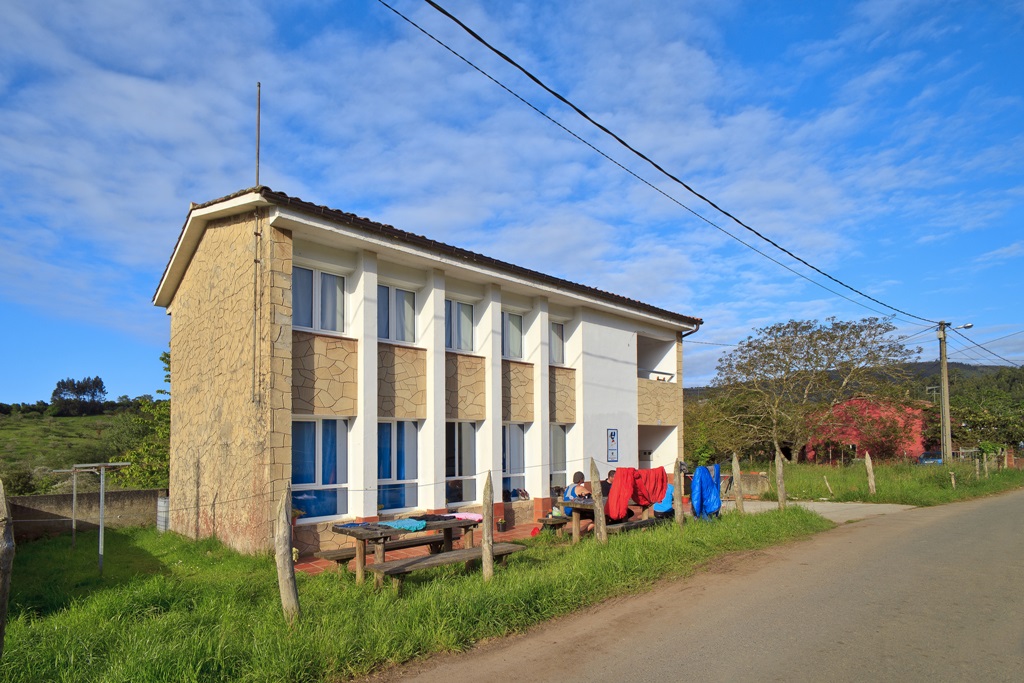


The area of Villaviciosa is symbolically the heart of Asturias because of its situation at the centre-east of the region and because the area is well known for its Cider production of which the Asturians are very proud.
Villaviciosa is very popular with tourists due to its beauty, landscapes, beaches and the Partial Natural Reserve surrounding the estuary.
The Estuary of Villaviciosa is 8 Km long and at the point close to the mouth is 1000 metres wide ending at the stunning beach of Rodiles. It is an essential place for ornithologists as this estuary has of vital importance for migratory and wintering birds where you can observe more than 150 species. The environmental value of the estuary of Villaviciosa has been recognised as a European Place of Interest (LIC), a special Protection Zone for Birds (ZEPA) and a part of the network NATURA 2000. Also it is in the list of Wetlands with International Importance (RAMSAR).
The area of Villaviciosa has an exceptional heritage full of examples of Romanic ethnographic relevance.
The village of Villaviciosa is a lively and charming village with an historic centre considered of Cultural Interest with important buildings like the Church of Santa Maria de la Oliva, the Ballina Park, the City Hall, the Riera Theatre or several Palaces from the XVII and XVIII centuries, among others.
Throughout the village and the surrounds there are multiple representations of Roman architecture, the principal one been the pre-Romanic basilica of San Salvador de Valdedios.
Just at the outskirts of Villaviciosa you will find the charming fishing village of Tazones, a beautiful old whaling town with white houses and a nice port considered of Cultural Interest.
The magnificent rural town of Sietes stands out for its decorated “horreos” (asturian food stores) of a great ethnographic value. Here you can visit the Casa L’Horru (House of the Asturian Food Stores) which was sponsored by the local emigrants in order to study and explain this traditional architecture.
The Council of Villaviciosa is a part of the Route of Saint James. This section is known as the “ Northern Route” which goes along the Coast of Asturias. In the area you can also do many other routes like the «Ruta de los Molinos del Rio Profundu» (Route of the Watermills), the «Ruta del Romanico» (Route of the Romans) or the «Ruta del Azabache» (Route of Jet, which is a black stone use in making Jewellery).
This area has some of the best beaches of Asturias such as Rodiles, a renowned sandy beach and considered one of the best waves in Europe by surfers. Other beaches of interest are El Puntal, Tazones, España, Meron, and La Ñora. Also, the coastline of Villaviciosa is a part of the “Coast of Dinosaurs” where you will find the Jurassic reptile prints and Dinosaur bone remains. You can see this around the Meron Beach, Tazones Port and Tazones Lighthouse Cliffs.
This is also an area that encourages traditional handcrafts as part of the local cultural wealth. One of them is the Jet jewellery (Azabache) designs as Villaviciosa is home to one of the most important Jet mines in Asturias. The jet from this area is considered one of the best quality in the world. Other handcrafts of woodcarving, pottery, textile, leatherwork, etc. can be found throughout.
The Gastronomy in this area is based around the traditional Asturian fare, with stews, Asturian reared beef and fresh fish from the see and the rivers. It has special importance the quality shellfish from the area, cooked with rice or in many ways but always very tasty. And of course the real star of the area is Cider which is great for drinking but also for cooking with.
In the area of Villaviciosa there are many popular parties, but two of the most significant ones are “The Festival of the Apple” and the historic festival in the town of Tazones with a re-enactment of “The Landing of the Emperor Carlos V”.
More info: Villaviciosa Tourist Office
If you want more information contact Where is Asturias at info@whereisasturias.com












The area of Colunga is symbolically the heart of Asturias because of its situation at the centre-east of the region and because the area is well known for its Cider production of which the Asturians are very proud.
Colunga is a very popular place for tourism due to the breathtaking landscapes, wild cliffs, smooth rolling mountains, beautiful beaches and picturesque towns. Also is very well known for two things, The Dinosaur Route and Museum, and the gorgeous town of Lastres.
The central-east coast of Asturias is an important place of fossils and footprints of large dinosaurs that inhabited this land for millions of years.
The municipalities of Villaviciosa and Colunga, in the heart of Cider County, are a great place for fossil hunters and you’ll find a vast amount of pre-historic remains scattered around the cliffs exposed by the Cantabrian Sea. As a result, there are large networks of paths that will lead you to amazing places to find traces of remains left behind by the giant lizards.
The Jurassic Museum of Asturias is a unique building designed in the shape of a large dinosaur footprint, houses one of the most comprehensive and concise collections of these fascinating reptiles.
Also, the coastline of Colunga is a part of the “Coast of the Dinosaurs” due to the many Jurassic reptile prints and bone remains found there. One of the best examples of this can actually be visited at La Griega beach which is only three kilometres from the Museum and is where the largest Sauropod footprints in the world can be found. You can find many other examples at the Cliffs of Luces and Lastres.
The other main attraction of Colunga is the picturesque and charming fishing town of Lastres, winner of the “Exemplary Town of Asturias Award” in 2010. This is an award given by the “Princess of Asturias Foundation” and delivered in person by the King and Queen of Spain. The award is conferred on a town, village, population centre, scenic area or group of people in the Principality of Asturias that have stood out in a notable way in “defending and conserving its natural or environmental setting, its historical, cultural or artistic heritage, or in the carrying out of outstanding communal works or other such displays of solidarity”.
The centre of Lastres in Colunga council, has an historic heritage considered of Cultural Interest due to its architecture and religious and civic buildings such as The Church of Santa Maria de la Sabada dating back to 1757 or the fine examples of emblazoned Palaces and traditional houses. It is also worth to mention the Church of the Buen Suceso from the 16th century, the Clock Tower and some fine examples of Indiano architecture. There are also other examples of pre-Romanic architecture throughout the rest of the area such as the Church of Santiago de Gobiendes from the X century.
Lastres is home to some of the most beautiful beaches of Asturias such as The Isla Beach, Barrigon Beach, Lastres Beach, La Griega Beach or Espasa Beach.
The Council of Colunga is a part of the Route of Santiago. This section is known as the “ Northern Route” which goes along the Coast of Asturias. It is a great place for walking and enjoying different routes like the «Dinosaur Route» or the “Mysteries of the Sea Route”.
The Gastronomy in Colunga is based around the traditional Asturian fare, with stews, Asturian reared beef and fresh fish from the see and the rivers. It has special importance the quality shellfish from the area, cooked with rice or in many ways but always very tasty. And of course the real star of the area is Cider which is great for drinking but also for cooking with.
More info: Colunga Tourist Office
If you want more information contact Where is Asturias at info@whereisasturias.com











The council and area of Llanera is a part of the Nora Region which is made up by the towns of Posada de Llanera, Noreña and Siero and is situated on the banks of the River Nora.
Llanera is very important for business due to it strategic location between the three main cities in Asturias, Oviedo, Gijón and Avilés and less than 45 minutes from the airport. It is one of the most important manufacturing, storage and distribution areas for the Principado de Asturias hence the high concentration of large industry in the area.
It is a busy and lively area full of services companies and businesses but is also full of monuments, open spaces, good food and parties.
Throughout the council you will find many culturally interesting aspects such the Romanic Church of Santiago de Arlos, The Valdes Tower, San Antolin de Villanueva, The Villanueva Palace, the Santa Barbara Palace, The Old Factory of Guisasola, the Habana Plaza (now a school of music) and the schools of Robledo. It has also a very important Etnographic heritage of Mills, Fountains and old Laundry areas.
Llanera is a part of the Route of Santiago being a way of connection between Oviedo and the «Northern Route«. The area has several other walking routes such as the Posada de Llanera-San Cucao Route or the Rural Palaces Route.
The local food of Llanera is a traditional Asturian fare, with stews, Asturian reared beef, chicken dishes, and fresh fish from the sea and rivers. The true gastronomic toast of the area is their pork production and especially the rearing of the local breed called “Gochu celta” or Celtic Pig. The meat of this pig produces excellent organic cured meats, fresh meat and offal.
Llanera hosts the very popular costume party of Exconxuraos that celebrates all things medieval.
More info: Llanera Tourist Office
If you want more information contact Where is Asturias at info@whereisasturias.com
Images supplied by Ayuntamiento de Llanera, Daniel Mora and Turismo Asturias: Camilo Alonso, Arnaud Spani.







The Council of El Franco belongs to an area called “The Historical Park of the Navia River”. This refers to an area of different councils with a common historical past stemming from the ancient inhabitants of Asturias. The west of Asturias is full of legends, mystery, magic and myth. This is largely because their location between the sea and the mountains of Galicia and Leon and their welcoming character as a land of travelers, farmers, fisherman, shepherds, sailors and craftsmen.
The whole area is like a living museum with exhibits of mountains, beaches, valleys, rivers, towns and forests where you can find history in every step through the remnants of the Celtic, Roman and Christian cultures.
If we had to define this area in few words then it would be inspirational, relaxing, spiritual and mystical.
Other common denominators to all these areas are the mix of Galician and Asturias architecture, with stone structures and slate roofs. The traditional Asturian stores called “horreos” or “paneras” live side by side with Galician Style Barns. You will find these constructions right next to the houses and were designed protect cured meats and vegetables from animals and insects.
During the middle Ages the nobility and clergy governed the land and left testimonies of their wealth in the form of Palaces, Large Stately Houses, chapels and sanctuaries. You will find a lot of examples of this throughout the enchanting small coastal and inland country villages.
The Council of El Franco has plenty of charming places, natural monuments and pretty beaches to visit.
In El Franco you can visit the Natural Monument of As Covas da Andia, the Cabo Blanco Settlement or the estuary of Porcia.
The main town of the council is the village of La Caridad. Throughout the area, you will find beautiful towns with many churches, palaces and large stately houses. Some of the best examples of this are the Church of Santa Maria de Miudes , the Sanctuary of La Braña, The Fronfria Palace or the Castropol, Villar, or Jardon Palaces, and the charming Viavelez fishing port and Marina.
You can also witness the beauty of El Franco at the viewpoints of The Atalaya and The Castro of Cabo Blanco, the walk along the “Coastal Route of Castello-Porcia” and the section of the ”Northern Route” of the “Route of Santiago” that passes through the El Franco.
There are plenty of quality beaches to choose from like Castello, Porcia and Pormenande.
More info: El Franco Tourist Office
If you want more information contact Where is Asturias at info@whereisasturias.com
Images supplied by Tomás Fano, Ayto de El Franco & Parque Historico del Navia, Turismo Asturias: Camilo Alonso.






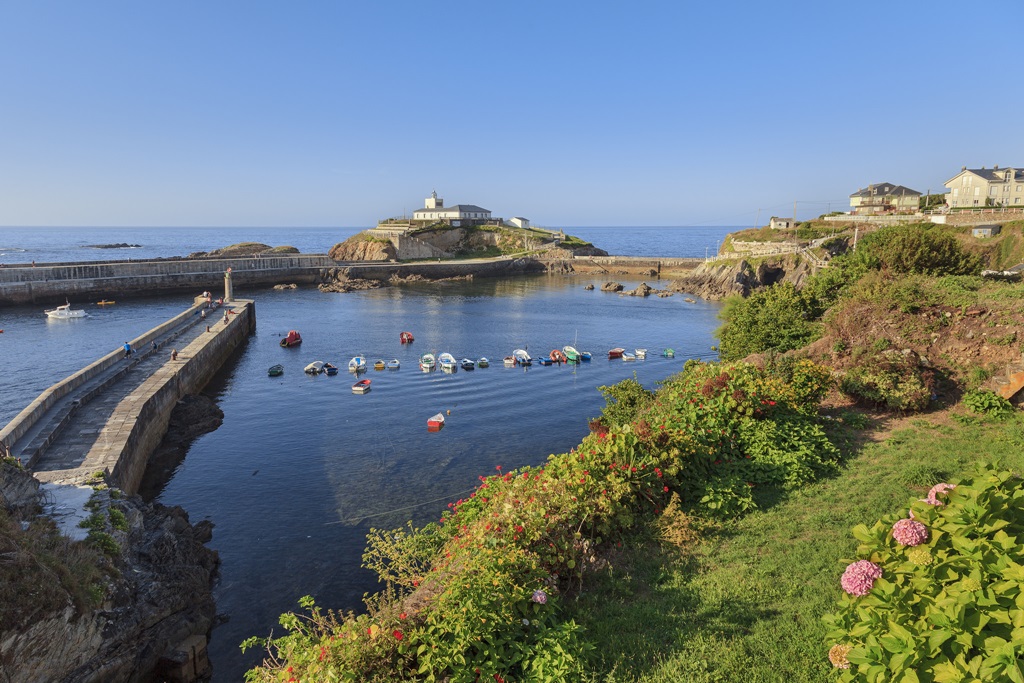









The Council of Tapia de Casariego belongs to an area called “The Historical Park of the Navia River”. This refers to an area of different councils with a common historical past stemming from the ancient inhabitants of Asturias. The west of Asturias is full of legends, mystery, magic and myth. This is largely because their location between the sea and the mountains of Galicia and Leon and their welcoming character as a land of travelers, farmers, fisherman, shepherds, sailors and craftsmen.
The whole area is like a living museum with exhibits of mountains, beaches, valleys, rivers, towns and forests where you can find history in every step through the remnants of the Celtic, Roman and Christian cultures.
If we had to define this area in few words then it would be inspirational, relaxing, spiritual and mystical
Other common denominators to all these areas are the mix of Galician and Asturias architecture, with stone structures and slate roofs. The traditional Asturian stores called “horreos” or “paneras” live side by side with Galician Style Barns. You will find these constructions right next to the houses and were designed protect cured meats and vegetables from animals and insects.
During the middle Ages the nobility and clergy governed the land and left testimonies of their wealth in the form of Palaces, Large Stately Houses, chapels and sanctuaries. You will find a lot of examples of this throughout the enchanting small coastal and inland country villages.
The Council of Tapia de Casariego, is another of the entrances to the Historical Park of the River Navia, through a museum called “The Lords of the Palace-Houses” dedicated to the interpretation of the Palaces, Nobility and their Large Houses, Indiano Houses and the history of emigration and ownership of the land.
Tapia de Casariego is a very popular area for tourism with very nice landscapes, beautiful beaches and archaeological settlements. The seaside village of Tapia de Casariego, just beside an old fortified settlement, is a modern and lively fishing port and Marina.
The main Patrimony is the Constitution piazza, the Church of San Blas, the Church of San Sebastian and the Parish Church of San Esteban. The true charm of Tapia de Casariego lies in its promenade and the walk through the port and onto the lighthouse.
In the area you will find Palaces and Large Houses like Campos, Sta Maria, Lindoy, Casariego, Donlebun and As Nogueiras.
The beaches of this area are very beautiful and popular especially Penaronda Beach, Serantes Beach and Anguileiro Beach.
Tapia de Casariego is also very popular for surfers and plays host to the International Surf Competition every Easter since 1971. At the same time they celebrate the Memorial for Peter Gulley, the Australian citizen who introduced the surf in Tapia de Casariego. There are surf schools in Tapia de Casariego with qualified teachers.
Also, you will find different vantage points where you can appreciate the beauty of this area such as Os Cañois, Represas, The Lightouse and Del Monte. Finding these vantage points is simply a matter of following the different available Routes such as “The Route of the Iron and the Gold”, “The Route of the Corn” and the “Coastal Route of Tapia”. The area is also one of the stages of the famous “Route of Santiago” passing through Tapia de Casariego in a section of “The Northern Route“.
Tapia de Casariego has a 9 holes golf course in Rapalcuarto celebrating many tournaments during the year.
The Gastronomy of the area is mainly traditional Asturias cuisine with some Galician influence. It is mainly based on Casseroles, Asturian reared beef, fresh fish from their rivers and the sea, shellfish, cheeses and desserts from the area. In this area it is very important the chestnut and when it comes to season they do a lot of dishes, casseroles and especially very nice desserts with it.
Tapia celebrates every summer the International Interceltic festival with a Medieval Market.
More info: Tapia de Casariego Tourist Office
If you want more information contact Where is Asturias at info@whereisasturias.com
Images supplied by Tomás Fano, Ayto de Tapia de Casariego, Parque Historico del Navia and Turismo Asturias: Arnaud Spani
